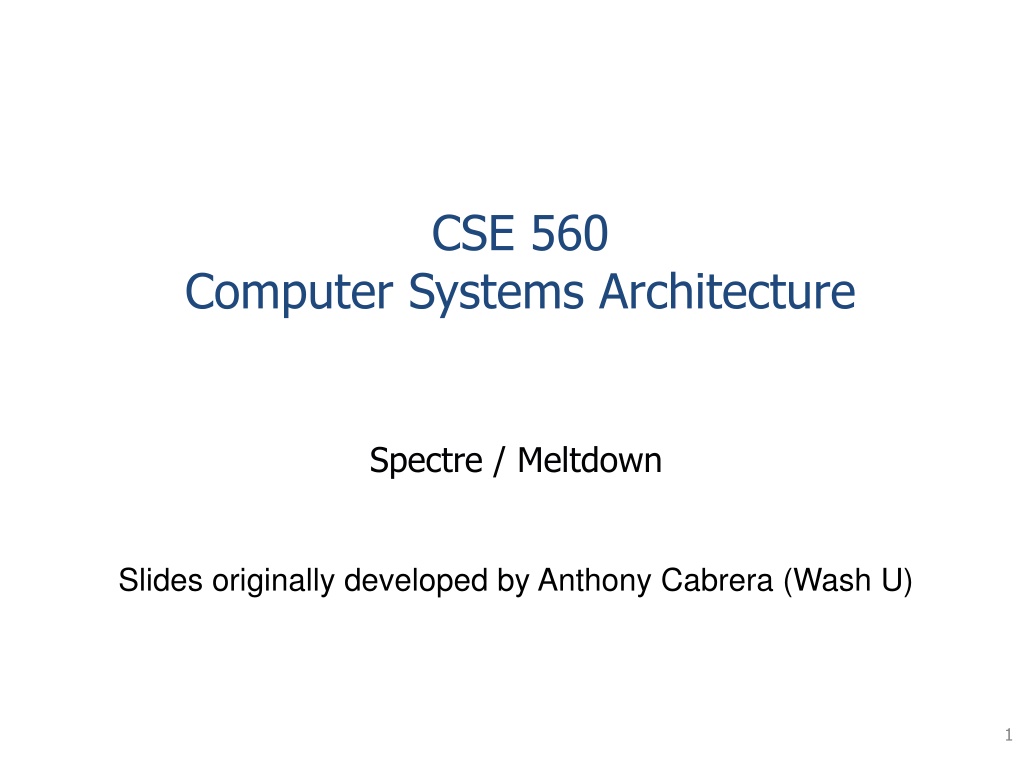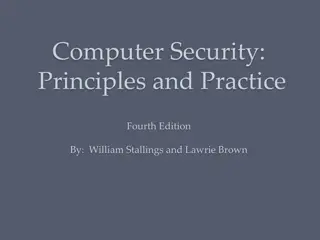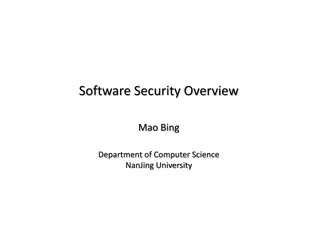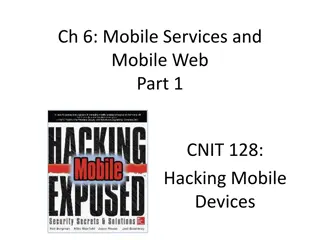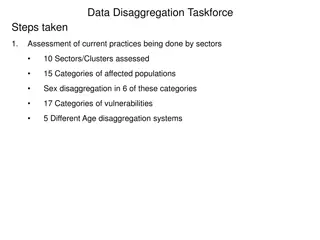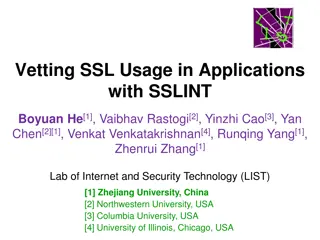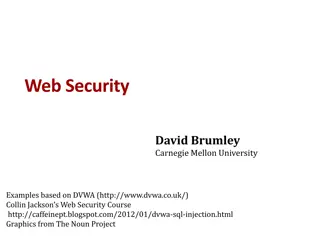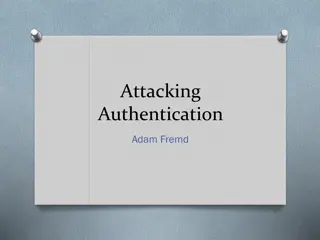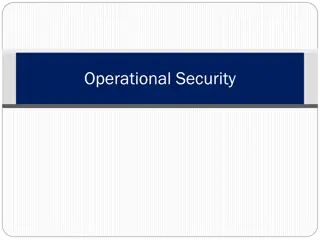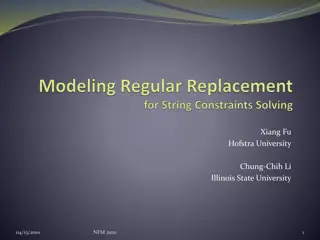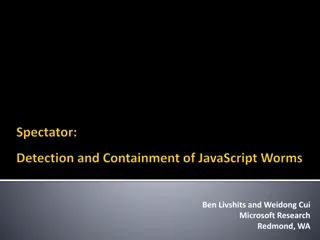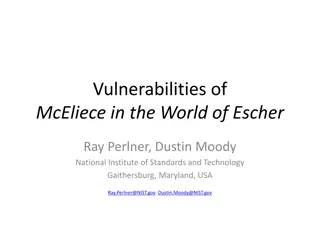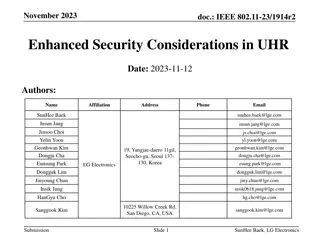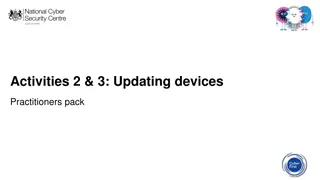Understanding Spectre and Meltdown Security Vulnerabilities
Spectre and Meltdown are two critical security vulnerabilities that exploit microarchitectural features to gain unauthorized access to memory. These vulnerabilities enable attackers to read memory that should be inaccessible, targeting branch prediction and exception handling mechanisms. Side channel attacks, such as timing and covert channels, are utilized in these exploits, allowing the disclosure of unintended information. Techniques like flush and reload attacks and Spectre's exploitation of branch prediction are employed to carry out these attacks.
Uploaded on Sep 24, 2024 | 0 Views
Download Presentation

Please find below an Image/Link to download the presentation.
The content on the website is provided AS IS for your information and personal use only. It may not be sold, licensed, or shared on other websites without obtaining consent from the author. Download presentation by click this link. If you encounter any issues during the download, it is possible that the publisher has removed the file from their server.
E N D
Presentation Transcript
CSE 560 Computer Systems Architecture Spectre / Meltdown Slides originally developed by Anthony Cabrera (Wash U) 1
This Unit: Two Security Vulnerabilities App App App Side Channel Attacks What are they? Timing attacks System software Mem I/O CPU Two vulnerabilities today: Spectre Branch prediction Meltdown Exceptions 2
Spectre and Meltdown Two distinct forms of vulnerability Several variants, we will only discuss main ideas Both enable illegal accesses of memory I.e., reading memory that shouldn t be accessible Both target microarchitectural features NOT software Both leverage speculative execution and caches Spectre targets branch prediction Meltdown targets exception handling 3
Terminology What is a side channel attack? Function or characteristic of a system that discloses unintended information Measuring the time to complete a sparse matrix-matrix multiply tells you about the number of non-zeros Timing, power consumption, RF emissions, etc. are all candidate side channels What is a covert channel attack? Altering a system so that it will disclose information Installing a keystroke monitor can be used to learn passwords prior to them being encrypted Spectre and Meltdown are both covert channel attacks These labels are not uniformly used! 4
Timing Side Channel Want to know if address is cached Measure access time with high precision timer Uncached values take a long time to access Cached values take a short time to access Can be side channel (e.g., another core) or covert Possibly cached addresses 5
Flush and Reload Attack Flush address from cache Conditionally reload address to cache Reload condition is what we want to learn Re-access address Fast access address is cached Slow access address is not cached 6
Spectre Exploit the branch predictor in OoO pipelines Train predictor to take one path Switch to other path and access illegal memory (e.g., via out of bounds array access) 7
Exploiting Branch Prediction byte a[N]; int size_a = N; byte b[256]; foo (int x){ if (x < size_a) y = b[a[x]]; } Do this many times (with good x) so branch predicts true Next, flush b and size_a Then call foo(bad_illegal_x) Result is b[a[bad_illegal_x]] is loaded into cache Even though if test ultimately fails! 8
Exploiting Branch Prediction byte a[N]; int size_a = N; byte b[256]; foo (int x){ if (x < size_a) y = b[a[x]]; } With size_a not in cache, if takes many cycles to resolve Initially b not cached, but speculative execution puts one entry of b into cache Use timing side channel to determine which entry cached That entry is value of a[bad_illegal_x]! 9
Notes about Spectre What if accessed address is protected? a[bad_illegal_x] might trigger exception! Nope, because bad load never commits It does trigger cache fill, however, which is the problem Variant is indirect branch exploitation Train predictor to make speculative jump to bad code Bad code alters microarchitecture state (e.g., cache) Leak information via side channel 10
What addresses are vulnerable? Certainly addresses within same process: a[bad_illegal_x] can be any logical address readable by the process But what about other processes? Flush and reload must be in process (covert) Timing side channel can be another process And what about kernel memory? eBPF (extended Berkeley packet filter) is code provided by user application that runs in kernel space Static analysis performed, but attack code looks good wrt array bounds (they are explicitly checked)! 11
What machines are vulnerable? Any microarchitecture that has the following: Cache Out of order execution Branch prediction Manufacturers include Intel AMD Arm Others (including gem5 stock OoO model!) 12
OoO Simulation in gem5 f = fetch d = dispatch n = rename p = dispatch i = issue c = complete r = retire . one clock cycle of normal execution = instruction is eventually squashed load size_a if (x < size_a) load a[x] load b[a[x]] 13 Credit to Jason Lowe-Power @ UC Davis
What can be done? Spectre mitigation is difficult It represents a whole class of vulnerabilities Disabling microarchitectural features has substantial performance impact 14% slowdown reported by several groups Patches available for specific variants 14
Meltdown Exploits features of virtual memory Often, all of physical memory is mapped into user space (and protected from user access) to speed system calls (user kernel transitions) Core idea is to access illegal memory and (like Spectre) impact the cache state before load is rolled back 15
Exploit Processor attempts a load instruction Address is in protected memory The instruction issues, which triggers both: 1. Reading address from main memory 2. Checking the privilege bits in the virtual memory Privilege check fails, so load never commits By the time of the failure, cache can already be updated Value is now in cache, proceed to use timing side channel Same as Spectre here on out 16
What machines are vulnerable? Any microarchitecture that has the following: Cache Out of order execution Accessible page table concurrent with permission check Manufacturers include Intel Arm NOT AMD check permissions when reading page table 17
What can be done? Meltdown mitigation is more straightforward Main memory read happens concurrently with privilege check (which is a VM function) But main memory read requires access to page table Specifically, a page table entry that is in the kernel! Solution is to separate user and kernel space page tables Called kernel page table isolation or KPTI Access to kernel page table from user mode refuses to provide physical address Therefore, it never gets cached 18
Summary Both Spectre and Meltdown directly exploit speculative execution (specifically OoO execution) Issue a load to an address that is not allowed Speculatively execute the load, putting the value in cache The load never commits, but the value is already cached Use a timing side channel attack to read the value in cache Mitigation is difficult because of large number of variants to the general vulnerability A bit easier for Meltdown via page table isolation 19
